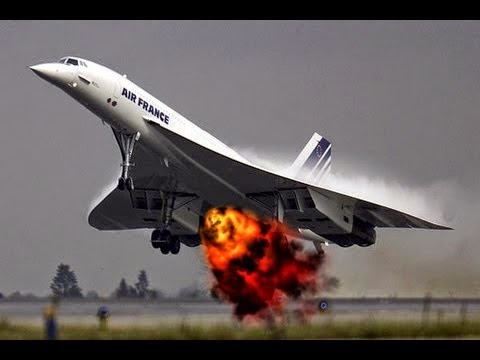Usually when we talk about mechanical failures causing aircraft mishaps we assume that we are talking about only one aircraft involved. In the case of Air France Flight 4590, a mechanical failure from another aircraft ultimately caused this aircraft's mishap.
Air France flight 4590 was one of the few Concorde aircraft that were designed for supersonic flight. The Concorde had been flying for 27 years with no fatal mishaps up to this point. The flight occurred on 25 July 2000. The aircraft was flying from Charles de Gaulle International Airport near Paris to John F. Kennedy International Airport in New York City.
Five minutes prior to take off, a Continental Airlines DC -10 was departing for New Jersey at the same airport. Prior to its take off the aircraft had repairs done to one of the engine thrust-reversers. The mechanic used a titanium alloy strip to replace the wear strip in the thrust reverser that wasn't authorized (Learmount, D., 2000). The strip was a non-OEM part with an irregular rivet pattern that was not machined properly. This wear strip is often replaced because it receives so much wear and tear. When the DC-10 took off it dropped this wear strip on the runway. Before takeoff of all Concorde aircraft the airport was supposed to conduct a visual runway inspection for debris, but this was never accomplished.
When the Air France Concorde took off it was over max gross takeoff weight. Partly this was because of all the fuel needed to make the international flight. Reports also showed that the aircraft had a center of gravity that was way too far aft for safe flight. The wing tank had also been overfilled. Despite this, none of these factors were directly linked to have caused the crash.
Upon takeoff the Concorde's main landing gear struck the metal strip left on the runway from the DC-10. The tires exploded and the air blast from the explosion caused the wing tank to rupture. The fuel rupture naturally caught fire and the aircraft lost power to one of the four engines that were desperately needed during takeoff. The aircraft failed to maintain altitude and stalled, striking a nearby hotel. Altogether 113 people perished including 4 people on the ground.
Though the main landing gear striking the metal strip was determined to be the major cause of the accident, there were still several other factors and theories in play here. In order to save weight the Concorde was designed to fly without flaps and slats. This obviously did save weight, but dramatically increased the takeoff and landing speed of the Concorde. This increase of speed also increased the speed of the main landing gear wheels, making the aircraft more prone to tire failure. This increase in speed made the tires explode more violently. Long before this accident in November of 1981 the NTSB sent a letter to the French Aviation safety board, BEA (Bureau d'Enquêtes et d'Analyses pour la Sécurité de l'Aviation Civile), stating their concerns over tire safety for the Concorde (Cosgrove, M., 2010).
Also there are theories that because the Concorde was over max takeoff weight that the pilots needed excess runway to takeoff and that the strip of metal was past the point of normal takeoff for a Concorde (Cosgrove, M., 2010). It was also found that there was a crucial spacer missing in the main landing gear that kept the landing gear from pivoting. There were tire marks on the runway from where the tires were pulling to the left, possibly slowing the aircraft and making it harder to get liftoff. The BEA found that these factors were negligible and not a factor in the accident.
Regardless the reasons for this mishap, it proved the end of the flying service of the Concorde.
References
Cosgrove, M., (2010). Op-Ed: Was the Concorde disaster trial a French cover-up?, Digitaljournal.com Retrieved
September 12, 2014.
Learmount, D., (2000). Poor repair' to DC-10 was cause of Concorde crash, Flightglobal.com. Retrieved
September 12, 2014.

No comments:
Post a Comment